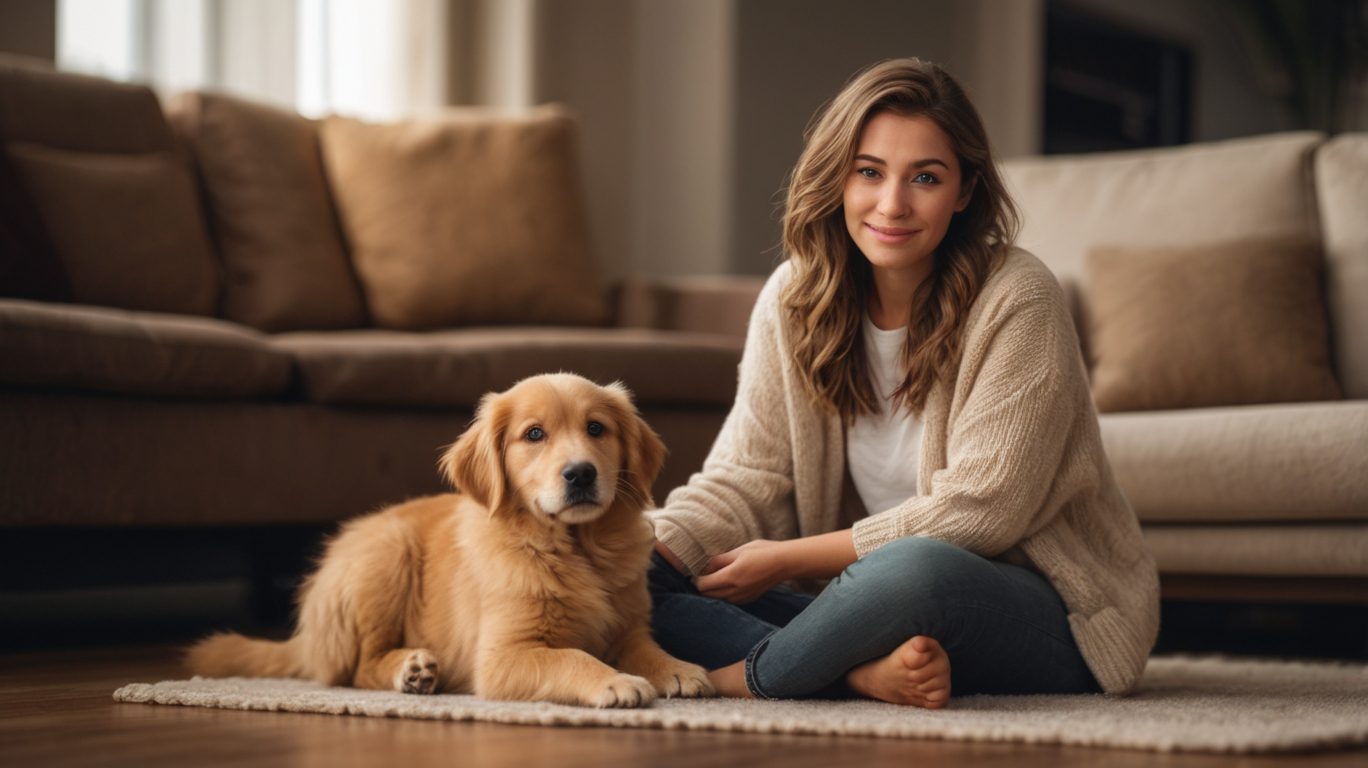Contents
- 1 How to Train a Puppy for Beginners: Everything You Need to Know (Well, Most of It!)
- 1.1 Why Learning How to Train a Puppy for Beginners Actually Matters (It’s Not Just About Tricks)
- 1.2 When to Start Training Your Puppy – How to Train a Puppy Timeline (Spoiler: NOW)
- 1.3 How to Train a Puppy for Beginners: Essential Supplies for Training Success (AKA Things I Bought After Day 2)
- 1.4 Potty Training: The Actual Worst (But You’ll Get Through It)
- 1.5 How to Train a Puppy to Respond to Their Name (Without Sounding Like a Crazy Person)
- 1.6 Crate Training Without Feeling Like a Monster
- 1.7 Basic Commands Every Puppy Should Know (But Probably Won’t Remember Half The Time)
- 1.8 Dealing with Biting (Because OMG THE TEETH)
- 1.9 Socialization: The Part I Almost Messed Up Completely
- 1.10 Common Mistakes When Learning How to Train a Puppy for Beginners (AKA My Personal Greatest Hits)
- 1.11 How to Train a Puppy for Beginners When You Work Full-Time (And Yes, It’s Possible)
- 1.12 When to Consider Professional Help (No Shame in the Training Game)
- 1.13 FAQs About How to Train a Puppy for Beginners (The Stuff People Text Me at 2AM)
- 1.14 The Importance of Consistency (Says the World’s Most Inconsistent Person)
- 1.15 Training Tools: Clickers, Treats, and Excessive Praise
- 1.16 Creating a Healthy Routine (While Maintaining Your Sanity)
- 1.17 Realistic Expectations and Celebrating Small Wins
- 1.18 Building a Bond Through Training (Even When They Drive You Nuts)
- 1.19 References
How to Train a Puppy for Beginners: Everything You Need to Know (Well, Most of It!)
Okay, so I did the thing. I got a PUPPY. And omg, nobody tells you how HARD it actually is?? Those Instagram accounts with perfect puppies are straight-up LYING to all of us.
Sorry. Deep breath. Let me start over.
Hi! I’m Jess, and about 7 months ago I brought home this adorable golden retriever puppy, Milo. He looked like a fluffy angel in the adoption photos. Fast-forward to day three: I’m standing in my kitchen at 3am, crying because he peed on my favorite rug for the FOURTH time that night, while he’s sitting there wagging his tail like he just did something amazing.
Yeah, so… training a puppy? WAY harder than I expected. But also totally worth it.
If you’re reading this because you just got a puppy and now you’re panicking about how to train a puppy for beginners – first of all, SAME. And second, I promise it gets better. Like, a LOT better. This blog is basically everything I wish someone had told me about puppy training before I brought Milo home.
Why Learning How to Train a Puppy for Beginners Actually Matters (It’s Not Just About Tricks)
So here’s the thing no one tells you – learning how to train a puppy for beginners isn’t really about teaching your dog to high-five or roll over (though those are super cute). It’s about not having a 70-pound chaos machine destroying your house and embarrassing you in public for the next 12+ years.
When I first got Milo and was desperately googling “how to train a puppy for beginners,” I wasn’t sure if I was being mean by setting boundaries. Like, he’s just a baby! But after a meltdown in PetSmart where he went full alligator-mode on my ankles, I called a trainer friend who told me something that kinda changed everything: dogs NEED structure. They’re actually happier with clear boundaries.
Mind. Blown.
Seriously though, training isn’t just for your sanity (though some days that’s reason enough lol). It’s also for your puppy’s safety. Because a dog that comes when called doesn’t run into traffic, ya know?
When to Start Training Your Puppy – How to Train a Puppy Timeline (Spoiler: NOW)
Oh man, I messed this up so bad at first. I thought puppies were like human babies – just keep them alive for the first few months, then worry about teaching them stuff later.
WRONG. So wrong.
Turns out puppies start learning from literally Day 1 in your home. Every single interaction teaches them something. Which means all those times I thought “aww, it’s fine, he’s just a baby” when Milo was chewing my phone charger? Yeah, I was actually teaching him “phone chargers are excellent chew toys!” 🤦♀️
You can start super basic training as early as 7-8 weeks when figuring out how to train a puppy for beginners. Their tiny brains are basically learning sponges during the first few months, soaking up EVERYTHING.
But don’t freak out! This doesn’t mean day one needs to be hardcore obedience boot camp. In fact, please don’t do that.
Your First Week Training Timeline (AKA My “What I Should Have Done” List)
I wish I’d had this timeline when I first brought Milo home. I literally made this after all my mistakes, lol:
| Day | Primary Focus | Secondary Focus | My Real-Life Notes |
|---|---|---|---|
| 1-2 | Bonding time | Name recognition | I was so paranoid he’d forget his name that I said “Milo” approximately 5,000 times these days |
| 3-4 | Potty training | Crate intro | Literally set timers on my phone for potty breaks. Still had accidents. Cried about it. |
| 5-7 | More potty training | Basic “sit” | Realized training sessions need to be SUPER short or he’d get distracted by literally anything (once it was his own foot) |
| 8-10 | Keeping up with basics | Adding “come” | This is when I discovered freeze-dried liver treats and WHOA game changer |
| 11-14 | Leash skills | Reviewing basics | Leash walking was a DISASTER at first. Pretty sure my neighbors thought I was being dragged by a tiny bear |
Your puppy might learn faster or slower than this. My friend’s aussie basically potty trained herself in a weekend (I’m still bitter about this). Meanwhile, Milo took WEEKS and still had random accidents for months when he got excited.
How to Train a Puppy for Beginners: Essential Supplies for Training Success (AKA Things I Bought After Day 2)
So I thought I was prepared. I had food, a collar, and a bed. HAHAHA. Nope.
Here’s what you ACTUALLY need:
- High-value treats (like, the stinkier the better – my pockets are permanently disgusting now)
- A clicker (I was skeptical but IT WORKS)
- Properly fitted collar AND harness (trust me, get both)
- Crate sized just right (I had to buy three different sizes, don’t be me)
- Poop bags (approximately one million)
- Enzymatic cleaner (regular cleaner DOES NOT WORK for pee smell, ask me how I know)
- Patience (Amazon doesn’t sell this, I checked)
Look, if money’s tight, you can totally make do with less. But having the right gear does make things easier. I literally tried to use chopped hot dogs as training treats at first and ended up with greasy pockets and a stomach-sick puppy. Learn from my fails when figuring out how to train a puppy for beginners yourself.
Potty Training: The Actual Worst (But You’ll Get Through It)

Let’s talk about pee and poop. Because for the first month, that’s like 90% of what your life becomes.
I think my worst moment was when I’d taken Milo out SEVEN TIMES in one evening, and he held it every time. The second we got back inside – BOOM. Peed right on the carpet while maintaining direct eye contact with me. I swear he was smirking.
The Reality of Potty Training
- Take your puppy out CONSTANTLY (after eating, drinking, playing, sleeping, existing…)
- Pick a potty spot outside and use the same boring command every time (“go potty” works, though sometimes I’d be desperately whispering “please pee please pee please pee”)
- When they FINALLY go in the right place, act like they just discovered the cure for cancer – treats, praise, throw a parade
- Don’t yell when they have accidents because it just makes them sneaky pee-ers
- Accept that your floor will not be truly clean for several months
Young puppies need to go out roughly every 37 seconds. Okay, it’s actually more like every 1-2 hours when they’re awake, but it FEELS like 37 seconds.
The first few weeks of learning how to train a puppy for beginners with Milo, I basically didn’t sleep. I set alarms every few hours like I had a newborn. I was a zombie. But then it clicked for him, and now he rings a bell by the door when he needs to go out. This feels like a MIRACLE after those first weeks.
How to Train a Puppy to Respond to Their Name (Without Sounding Like a Crazy Person)
This seems super basic but it’s actually really important. I spent the first few days just randomly saying “Milo” about a thousand times a day. My roommate thought I was losing it.
But here’s what actually worked:
- Say your puppy’s name in a super happy voice (yes, you will sound ridiculous)
- When they look at you – IMMEDIATE treat and “GOOD BOY/GIRL!” (more sounding ridiculous)
- Do this completely randomly throughout the day
- Gradually make it harder by creating distance or distractions
After about a week, Milo would whip his head around whenever I said his name. Game changer. Now I could actually get his attention before he ate something deadly or jumped in a puddle.
Crate Training Without Feeling Like a Monster
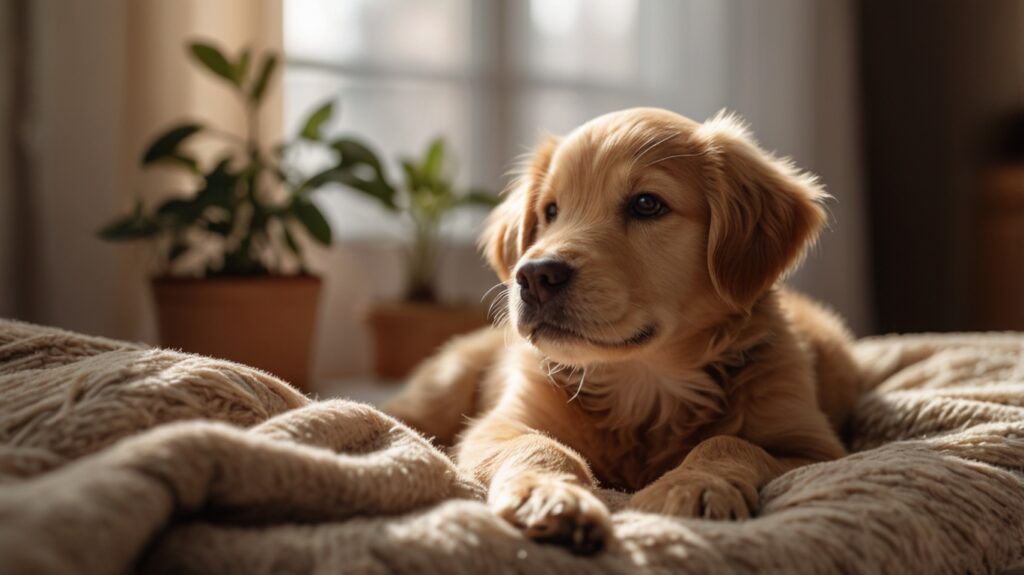
Can I be super honest? The first night I put Milo in his crate, I sat outside crying because he was whining and I felt like the WORST PERSON EVER. I was convinced he hated me and that I was traumatizing him for life.
Cut to a few weeks later, and this dog LOVES his crate. Like, voluntarily goes in for naps kind of love.
Here’s what made the difference:
- I started feeding ALL his meals in the crate
- I got him special stuffed Kongs that ONLY appeared in the crate
- I practiced random short crate sessions during the day, not just at night
- I never, ever used the crate as punishment
It took almost a month before he’d go in without hesitation. And yeah, there were some rough nights. I may have slept on the floor next to the crate a few times (don’t judge me).
But now? That crate is his happy place. When the delivery guy comes and Milo gets too excited, he actually runs to his crate to calm down. I’m still a bit shocked by this.
Basic Commands Every Puppy Should Know (But Probably Won’t Remember Half The Time)
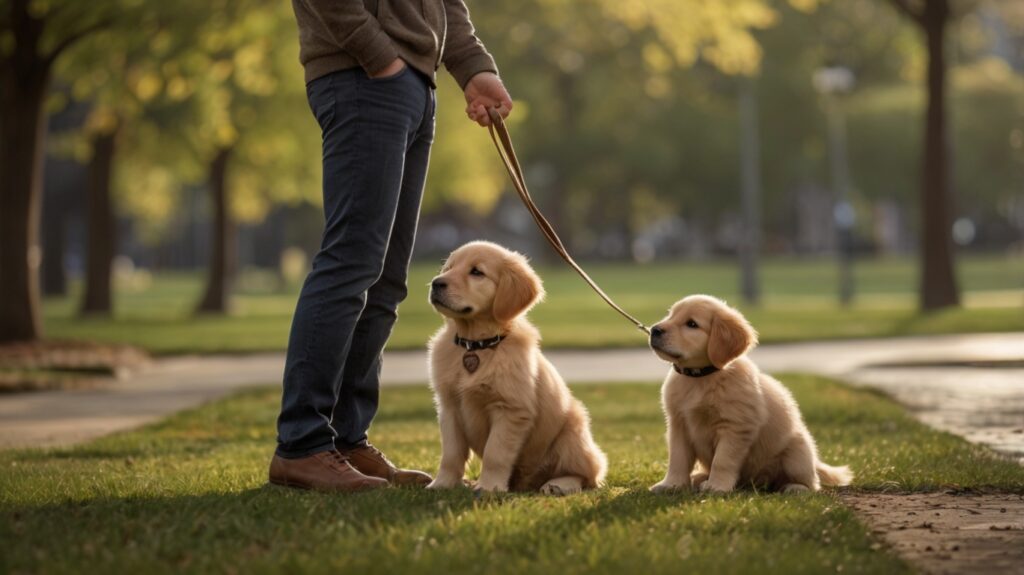
When you’re figuring out how to train a puppy, these are the must-know commands:
Sit
Usually the easiest one (thank god):
- Hold a treat by their nose
- Slowly move it up over their head so their butt naturally goes down
- The SECOND their butt hits the floor, say “sit” and give treat
- Repeat approximately 10,000 times
Come
This one’s super important but was weirdly hard for Milo:
- Say “come!” in your most ridiculously excited voice
- When they come to you, reward like they just won the Olympics
- NEVER call them to you for anything negative (bath time, medicine, leaving the park)
I practice this one randomly all the time. Sometimes I’ll call Milo from another room just to give him a treat and tell him he’s the best boy ever. Worth it.
Stay
This was nearly impossible for my wiggly boy at first:
- Get them to sit first
- Hold your palm up like you’re a crossing guard and say “stay”
- Take ONE step back
- If they stay put for even half a second – treat party!
- If they move – try again with less distance
Don’t expect puppies to stay for more than a couple seconds at first. Milo’s first “stay” was literally just him not immediately lunging for the treat in my hand. I counted it as a win.
Dealing with Biting (Because OMG THE TEETH)
Nobody warned me about puppy teeth?? They’re like little needles! The first few weeks my hands looked like I’d been fighting with barbed wire.
Puppies explore everything with their mouths, which is normal but also OUCH. When Milo would bite too hard, I’d yelp super loudly like I was dying (yes, my neighbors definitely thought I was weird) and immediately stop playing.
This works because it’s how puppies learn from their littermates. Bite too hard = fun time over.
I also kept toy baskets in literally every room so I could quickly redirect him to an appropriate chew toy. “No, not my hand… here, chew this dinosaur instead!”
Socialization: The Part I Almost Messed Up Completely
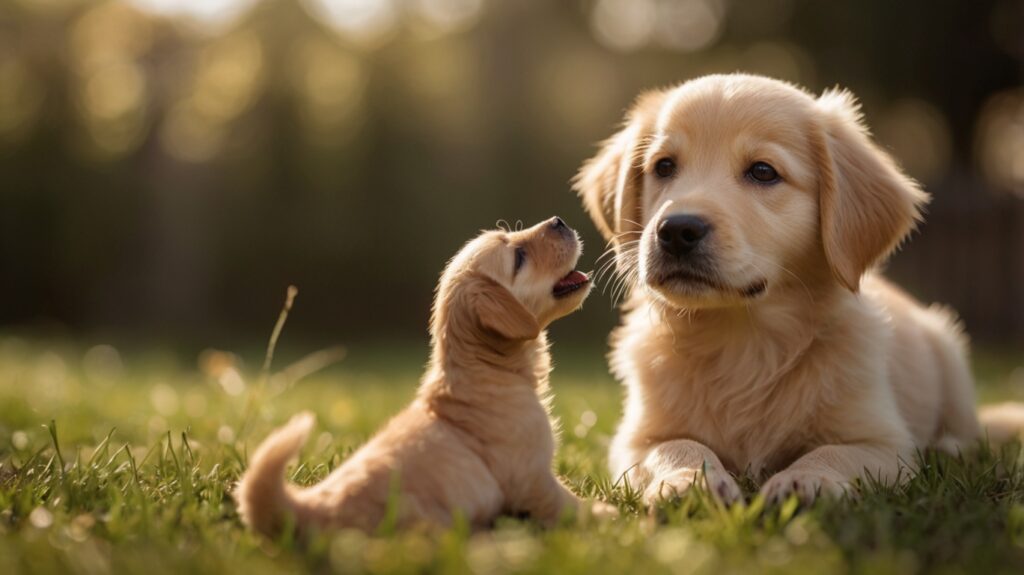
Between 3-14 weeks, puppies have this critical socialization period. Miss this window, and things get a LOT harder.
I almost blew it because I was paranoid about taking Milo places before he had all his shots. Thankfully, my vet set me straight – the risks of under-socialization are actually higher than the disease risks in most areas.
We compromised with:
- Puppy playdates with vaccinated friends’ dogs
- Carrying him through Home Depot and other pet-friendly stores
- Having different friends over (tall people, people with beards, people with hats, etc.)
- Playing YouTube videos of weird sounds (fireworks, thunderstorms, vacuum cleaners)
One thing I did right: I made sure ALL these experiences were positive. No forcing him to say hi if he seemed scared.
Common Mistakes When Learning How to Train a Puppy for Beginners (AKA My Personal Greatest Hits)
I made SO MANY mistakes those first few months:
- Zero consistency: One day I’d let Milo on the furniture, the next day I’d freak out about it. Poor dog was confused AF.
- Training sessions way too long: Trying to train a puppy for 30 minutes straight is like trying to teach quantum physics to a toddler hopped up on sugar.
- Getting frustrated and raising my voice: This just scared him and made both of us feel terrible.
- Not exercising him enough: A bored puppy is a destructive puppy. I learned this after he ate part of my coffee table.
- Expecting him to be perfect: He’s a BABY. Babies make mistakes. I needed to chill.
How to Train a Puppy for Beginners When You Work Full-Time (And Yes, It’s Possible)
I’m lucky that I work from home most days, but my partner works long hours at an office. For families without a stay-at-home person, puppy training gets trickier but it’s totally doable.
Some real talk about your options:
- Doggy daycare: Expensive but WORTH IT for socialization (Milo goes once a week and comes home exhausted in the best way)
- Dog walker: We use the Rover app for this
- Lunch break visits: My partner comes home at lunch when possible
- Puppy-proof room or pen: Better than crating all day
- Weekend training: Extra important when weekdays are busy
And yeah, crate training becomes super important when your pup needs to be alone sometimes. It’s their safe space.
When to Consider Professional Help (No Shame in the Training Game)
About two months in with Milo, he developed this habit of resource guarding his toys. He’d growl if anyone got close while he had a specific squeaky rabbit. It freaked me out.
I tried fixing it myself for weeks before finally hiring a trainer. Best money I ever spent. Two sessions and we had strategies that actually worked.
Consider getting professional help if:
- You’re feeling constantly overwhelmed or frustrated
- Your puppy shows concerning behaviors like resource guarding or fear aggression
- You’ve tried everything and potty training just isn’t clicking
- You have specific goals (like therapy dog certification)
The group classes at PetSmart didn’t work for us (too distracting), but private sessions were amazing. And honestly, the trainer trained ME as much as she trained Milo.
FAQs About How to Train a Puppy for Beginners (The Stuff People Text Me at 2AM)
How long does it take to fully train a puppy?
Hahahahaha. wipes tear Sorry. Technically the basics take about 4-6 months, but three years in and I’m still training Milo on something or other. It’s a lifelong process, friend.
What if my puppy just ignores treats during training?
Try better treats! Seriously, the hierarchy goes: kibble < regular treats < cheese < hot dogs < freeze-dried liver < rotisserie chicken. If food truly doesn’t motivate them (rare), try a favorite toy instead.
My puppy barks at EVERYTHING. Help?
Ugh, the barking phase. Figure out WHY they’re barking first. Milo went through a phase of alarm barking at the toaster. THE TOASTER. We worked through it by counter-conditioning (toaster = treats).
I’ve had my puppy for months and feel like I’ve made no progress. Is it too late?
Absolutely not! Some days it feels like one step forward, twelve steps back. Dogs learn at different rates. And contrary to that old saying, you can ABSOLUTELY teach older dogs new things.
The Importance of Consistency (Says the World’s Most Inconsistent Person)
I’m gonna be real with you – consistency was my biggest struggle. Some days I was Super Trainer, doing everything right. Other days I was just trying to survive.
But I’ve learned that consistency is about the big picture, not perfection. Five minutes of good training beats an hour of frustrated training ANY day.
And patience… oof. There were definitely days when I had to put Milo in his crate and take a time-out for MYSELF. No shame in that game.
Training Tools: Clickers, Treats, and Excessive Praise
I was super skeptical about clicker training at first. Like, why can’t I just say “good boy”?
But the clicker is way more precise, and Milo picked up on it immediately. It’s like taking a photo of the exact moment they did the right thing.
For treats, I learned the hard way that quality matters:
- Boring environments = regular treats are fine
- Distracting environments = bring out the premium stuff
And don’t be afraid to sound like a complete fool when praising your dog. My neighbors have definitely heard me shouting “WHO’S THE BEST POTTY PUPPY IN THE UNIVERSE?!” at 6am.
Creating a Healthy Routine (While Maintaining Your Sanity)
Puppies do better with structure, but let’s be honest – life happens. Here’s what worked for us:
- Consistent-ish feeding times (within an hour window)
- Morning and evening walks at roughly the same times
- Short training sessions after meals when he’s not too hyper
- Active play in the afternoons when he gets the zoomies
- Quiet evenings with chew toys to wind down
I have a rough schedule in my phone, but I don’t beat myself up when we have to deviate. Flexibility within structure is key.
Realistic Expectations and Celebrating Small Wins
There were definitely days I thought I’d adopted a furry demon instead of a dog. Days when I’d wonder if Milo was ever going to get it. Days when I’d look at friends’ perfectly behaved adult dogs and feel like a total failure.
But then he’d do something right – like the first time he went to the door instead of peeing on the floor – and I’d feel like we’d won the lottery.
I started keeping a “puppy wins” note on my phone. Just little things like “Milo walked past a squirrel without losing his mind” or “Sat calmly while I trimmed one nail.” On rough days, reading that list helped SO much.
Building a Bond Through Training (Even When They Drive You Nuts)
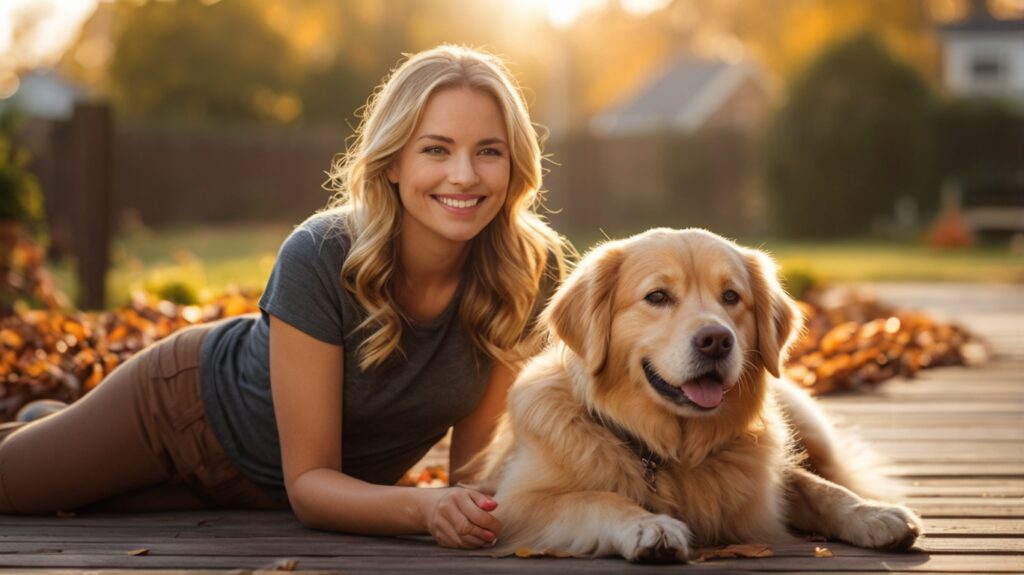
Sometimes I’d get so caught up in the training “to-do list” that I’d forget the bigger picture – I was building a relationship with this little creature. The training isn’t just about having a well-behaved dog; it’s about learning to communicate with each other.
Milo’s now three years old, and he’s definitely not perfect. He still occasionally eats socks, barks at the mailman, and has selective hearing when there are squirrels around. But he’s a happy, confident dog who trusts me completely, and I think that’s what really matters.
If you’re in those early months right now, just know it DOES get better. Way better. You’ll look back at the puppy phase both fondly and with a touch of PTSD. And one day, you’ll find yourself giving advice to other new puppy parents, conveniently forgetting just how much you struggled too.
Good luck! You’ve got this. And when you think you don’t, well… wine helps. Just saying.
References
- American Kennel Club. (2023). “Puppy Training: How to Train a Puppy.” AKC.org. https://www.akc.org/expert-advice/training/puppy-training/
- ASPCA. (2022). “Training Your Dog.” ASPCA.org. https://www.aspca.org/pet-care/dog-care/training-your-dog
- Dunbar, I. (2021). “Before and After Getting Your Puppy.” Dogstardaily.com. https://www.dogstardaily.com/training/digital-dog-training-textbook
- McConnell, P. (2019). “The Puppy Primer.” Patriciamcconnell.com. https://www.patriciamcconnell.com/store/The-Puppy-Primer.html
- Veterinary Centers of America. (2023). “Puppy Socialization.” VCAhospitals.com. https://vcahospitals.com/know-your-pet/puppy-socialization
